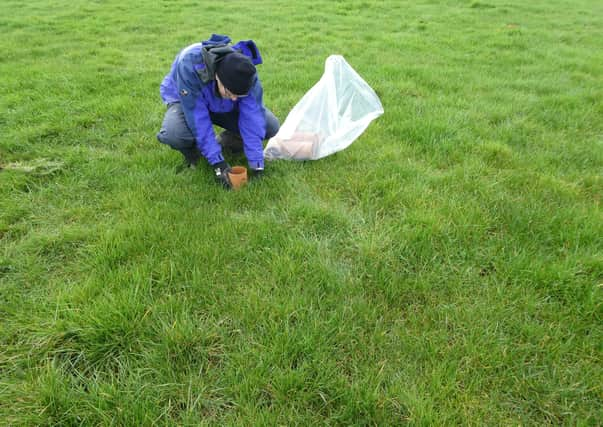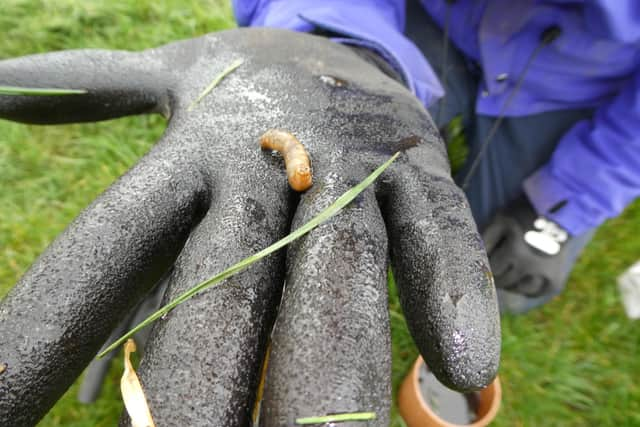Leatherjacket mitigation strategies


The project is one of seven taking place under the new Northern Ireland European Innovation Partnership (EIP) scheme, which has been co-funded by the European Agricultural Fund for Rural Development (EAFRD) and the Department of Agriculture Environmental and Rural Affairs (DAERA).
Leatherjackets are the larvae of the crane fly, or daddy long-legs. They reach maturity in the spring, and feed on the roots and stems of grass or cereal plants and can cause significant damage from loss of yield as shown by the presence of large bare patches. In particular, grass reseeds and new leys can be devastated if leatherjackets are not controlled. With grass being the principal and cheapest feed for the ruminant livestock sector in Northern Ireland the destruction of grass by leatherjackets can therefore have a significant effect on the profitability of dairy, beef and sheep farms.
Advertisement
Advertisement
Leatherjackets are a known problem in grassland systems, particularly in the west of the province. The impact they have on grass yields is often visible, overall reducing the ability to maximise grazing resource on-farm. Previously chemical solutions were used to control infestations but chlorpyrifos products were withdrawn from sale in 2016, leaving farmers with no control options. It is hoped that the results of this project will help develop simple strategies to help prevent infestations of leatherjackets on farms across Northern Ireland and minimise their effect.


Dr Archie Murchie, AFBI Entomologist said: “This project, by determining the factors that influence leatherjacket prevalence on farm, aims to propose a range of alternative Integrated Pest Management (IPM) strategies than can be undertaken on farm to reduce the risk of a leatherjacket infestation.
“Such strategies could include alternative grazing regimes to minimise the preferred habitat for egg laying and larval survival. By tackling the problem before it arises, yield losses could potentially be avoided. There is currently very little known about these pre-emptive mitigation strategies or their effectiveness, a problem this project hopes to address.”
Overall, the project will contribute towards preventing avoidable losses to grazing resources while reducing the dependence on agrochemicals in production systems. Results from the project will be disseminated across a range of media sources to improve the development and uptake of IPM strategies on farms in Northern Ireland and the UK.
Advertisement
Advertisement
The first step in the project was to determine the current prevalence of leatherjackets on each of the participant farms. Two specialist teams from AFBI were recently out on farm to undertake the initial field sampling.
The results from this survey will allow links to be made with management techniques on farm and will also be used to validate a weather-based model that predicts likely leatherjacket numbers. This will, alongside effective mitigation strategies, enable farmers to make the appropriate decisions on-farm to prevent infestations in the spring.